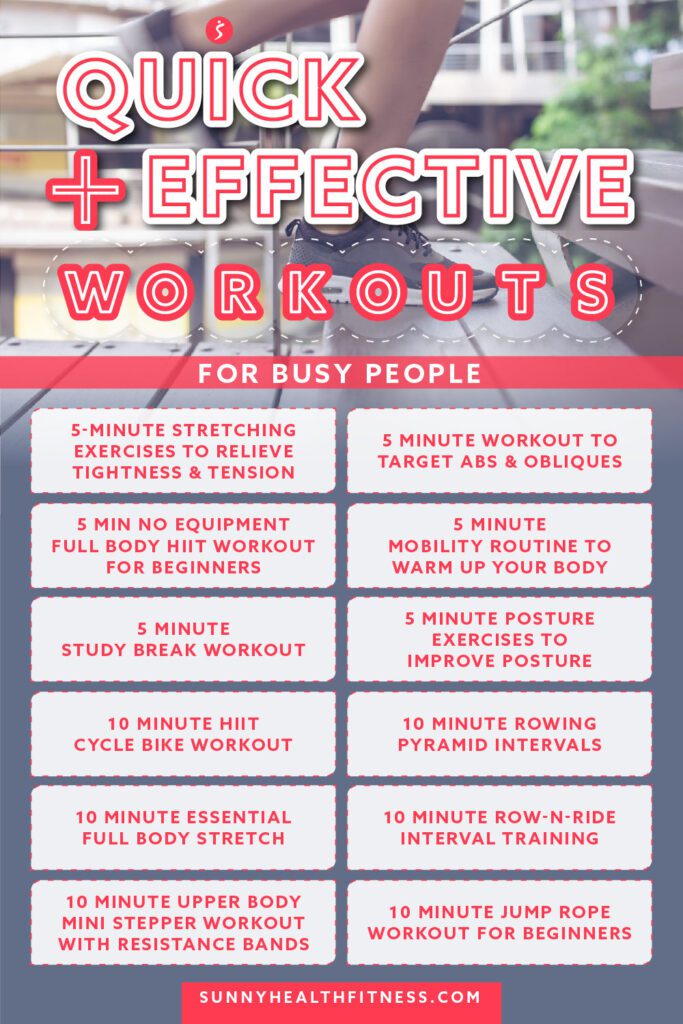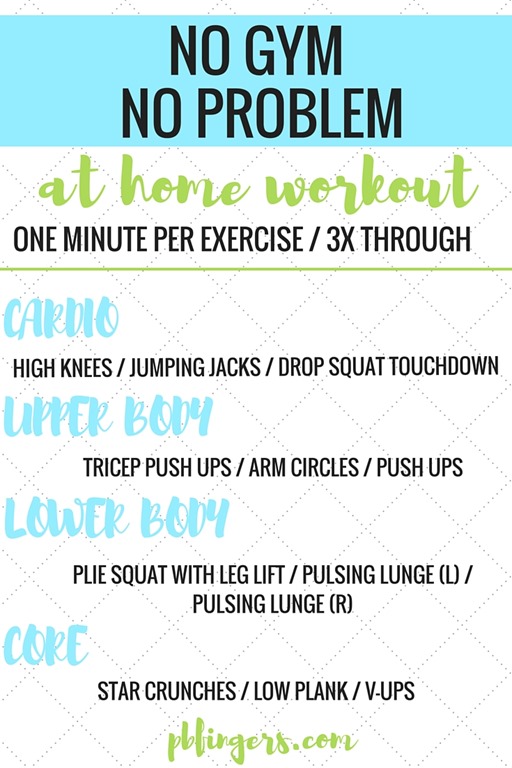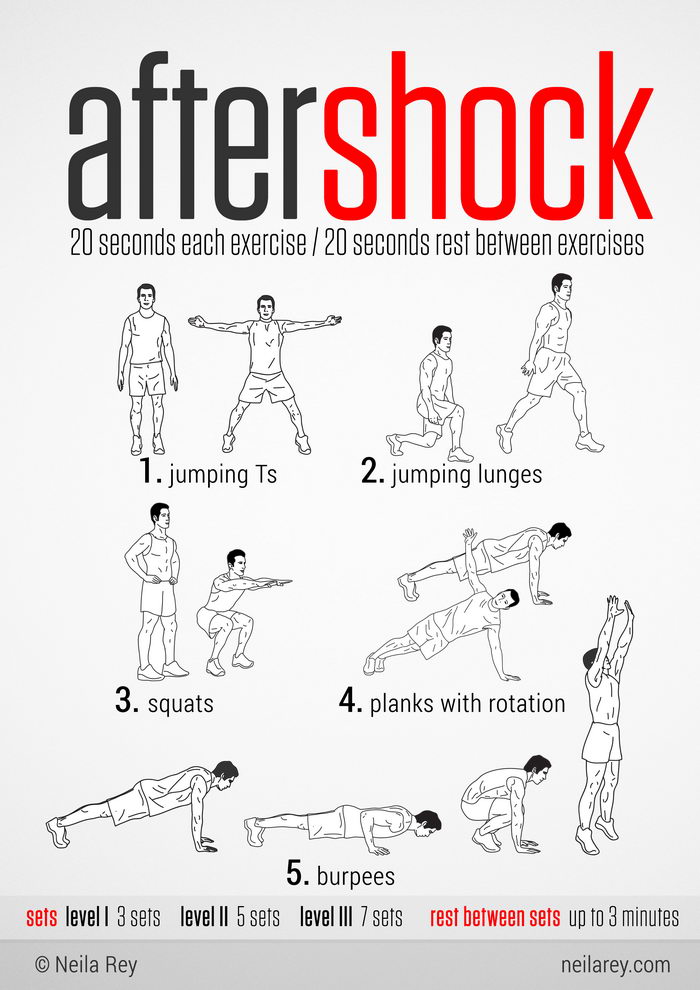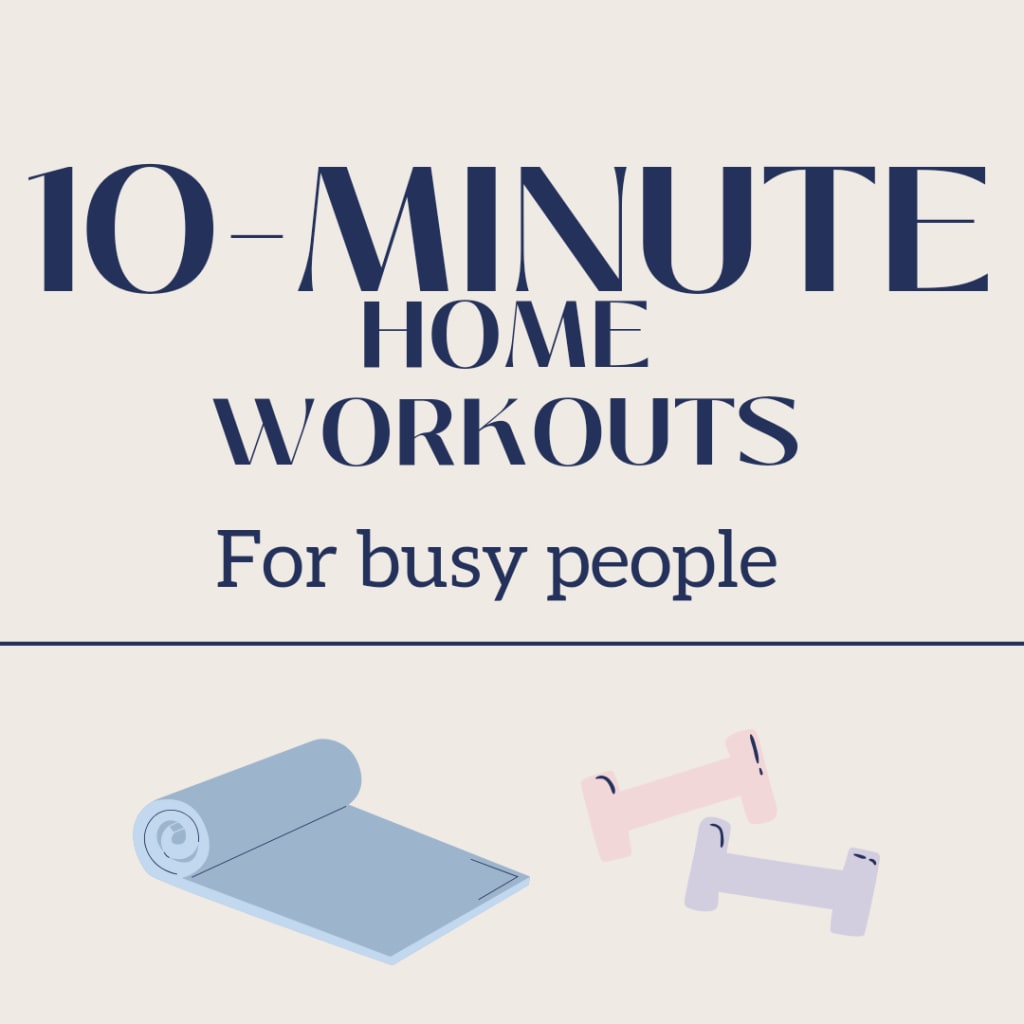
Effective Home Workouts For Busy People: No Gym Required
Are you finding it difficult to squeeze in time for a trip to the gym? With a busy schedule, it can be challenging to find a moment to dedicate to your fitness goals. But don’t worry, you don’t need a fancy gym membership or a personal trainer to get a great workout. In fact, there are plenty of effective home workouts that you can do in the comfort of your own living room.
In this article, you’ll discover a variety of workouts that are perfect for busy people like you. Whether you only have 10 minutes to spare or you can carve out a full hour, there are options for every time frame. From high-intensity interval training (HIIT) routines to strength training exercises, you’ll find something that suits your fitness level and goals. Plus, we’ll provide tips on how to stay motivated and make the most of your home workouts.
So, if you’re tired of making excuses and ready to get in shape without the hassle of going to the gym, keep reading. We’ll walk you through the steps to create an effective home workout routine that fits into your busy life. Whether you’re a fitness newbie or a seasoned athlete, there’s no better time to start prioritizing your health and well-being. Stay tuned for our article, where you’ll find all the information you need to get started on your fitness journey.
Table of Contents
ToggleBenefits of Home Workouts
Convenience
One of the greatest benefits of home workouts is the convenience they offer. With a home workout routine, you don’t have to worry about commuting to the gym or waiting for equipment to become available. Instead, you can exercise whenever and wherever you want, fitting it easily into your busy schedule. Whether it’s early in the morning before work or late at night after the kids have gone to bed, you have the flexibility to choose what works best for you.
Time-saving
Home workouts also save you valuable time. Without the need to travel to and from the gym, you can maximize your workout time and eliminate any time wasted during transportation. Additionally, with no need to change in and out of workout clothes in a public locker room, you can get straight into your workout and finish more efficiently. This time-saving aspect is particularly advantageous for busy individuals who have demanding work schedules and limited free time.
Cost-effective
Another significant advantage of home workouts is their cost-effectiveness. Gym memberships can be quite expensive, and the monthly fees can quickly add up over time. By working out at home, you eliminate the need for a gym membership and save money in the long run. Additionally, you don’t have to spend money on transportation or parking fees, making home workouts a budget-friendly option. With a small investment in basic equipment, you can create a versatile home gym that meets your fitness needs.
Setting Up Your Home Workout Space
Choose a designated area
To start your home workouts, it’s essential to choose a designated area solely dedicated to your exercise routine. This area should be spacious enough to accommodate your movements and equipment comfortably. Ideally, it should also be a quiet and private space where you can focus and feel motivated. This could be a spare room, a corner of your living room, or even your backyard if weather permits. By designating a specific area for your workouts, you create a dedicated space that helps you mentally transition into exercise mode.
Organize your equipment
Once you have chosen your workout space, it’s crucial to organize your equipment effectively. Having a well-organized setup ensures that you can find what you need quickly and keeps your exercise area neat and tidy. Consider investing in storage solutions such as shelves, hooks, or bins to keep your equipment off the floor and in order. This not only maximizes the space but also prevents any potential injuries from tripping over clutter during your workouts.
Ensure proper ventilation and lighting
Lastly, don’t overlook the importance of proper ventilation and lighting in your home workout space. Good ventilation helps maintain a comfortable temperature and fresh air circulation, preventing overheating and excessive sweating. If your workout area lacks natural ventilation, consider using fans or opening windows during your workouts. Adequate lighting is also crucial for safety and visibility, especially during exercises that require precise movements or balance. Use a combination of natural and artificial lighting to ensure optimal visibility throughout your workouts.
Selecting the Right Equipment
Consider your fitness goals
When it comes to selecting equipment for your home workouts, it’s essential to consider your fitness goals. Are you looking to build strength, improve cardiovascular fitness, or both? Understanding your goals will guide you in choosing the appropriate equipment. For example, if you aim to build strength, dumbbells, resistance bands, and a stability ball are excellent options. On the other hand, if cardiovascular fitness is your focus, a treadmill, stationary bike, or jump rope may be more suitable.
Start with basic equipment
If you’re new to home workouts, it’s wise to start with basic equipment that targets multiple muscle groups and allows for a variety of exercises. This way, you can get a well-rounded workout without needing to invest in expensive or specialized equipment. Some essential pieces to consider include dumbbells, resistance bands, a yoga mat, and a stability ball. These versatile items can be used for a wide range of exercises, providing you with countless workout possibilities.
Invest in versatile pieces
As you progress with your home workouts, consider investing in additional equipment that adds variety and challenge to your routine. This could include items such as kettlebells, a pull-up bar, or a TRX suspension trainer. These versatile pieces of equipment allow for more advanced exercises and offer endless possibilities for strength training and conditioning. By gradually expanding your equipment collection, you can continue to challenge your body and prevent workout plateaus.
Designing Your Workout Routine
Warm-up exercises
Every effective workout begins with a proper warm-up. Before diving into your main workout, it’s crucial to prepare your body by raising your heart rate, mobilizing your joints, and activating your muscles. Dynamic exercises such as jumping jacks, high knees, and arm circles are excellent choices for warming up. Aim for at least 5-10 minutes of dynamic movements to gradually increase your heart rate and warm up your body.
Strength training exercises
Strength training is essential for building lean muscle mass, increasing metabolism, and improving overall functional strength. Incorporating compound exercises that target multiple muscle groups simultaneously is an efficient way to maximize your strength training workouts. Some effective bodyweight exercises for strength training include push-ups, squats, lunges, planks, and burpees. These exercises engage multiple muscle groups, providing a full-body workout without the need for equipment.
Cardiovascular exercises
Cardiovascular exercises are vital for improving heart health, increasing endurance, and burning calories. If you don’t have access to cardio machines like treadmills or stationary bikes, there are plenty of bodyweight exercises that can get your heart rate up. Jumping jacks, high knees, mountain climbers, and burpees are all excellent choices for cardiovascular conditioning. Incorporating interval training, where you alternate between high-intensity bursts and recovery periods, can also help elevate your heart rate and maximize your cardiovascular workout.
Cool-down exercises
After completing your main workout, it’s essential to cool down and allow your heart rate to gradually return to its resting state. Cooling down helps prevent muscle soreness, aids in recovery, and promotes flexibility. Stretching exercises such as toe touches, quad stretches, and shoulder stretches are excellent for cooling down. Aim for at least 5-10 minutes of static stretching to relax your muscles and promote blood flow.
Bodyweight Exercises for Strength Training
Push-ups
Push-ups are a classic bodyweight exercise that targets multiple upper body muscles, including the chest, shoulders, triceps, and core. To perform a push-up, start in a high plank position with your hands placed slightly wider than shoulder-width apart. Lower your chest towards the ground by bending your elbows, keeping your body in a straight line. Push back up to the starting position, engaging your chest and triceps.
Squats
Squats are a compound exercise that primarily targets the lower body, including the quadriceps, hamstrings, glutes, and calves. To perform a squat, stand with your feet shoulder-width apart and toes slightly turned out. Lower your body by bending your knees and pushing your hips back, keeping your chest lifted and weight in your heels. Go as low as you can while maintaining good form, then push back up to the starting position, engaging your leg muscles.
Plank
The plank is a highly effective exercise for strengthening the core muscles, including the abdominals, obliques, and lower back. To perform a plank, start in a high push-up position with your hands directly under your shoulders and your body in a straight line from head to toe. Engage your core muscles and hold this position for a set amount of time, focusing on maintaining a neutral spine and avoiding sagging or arching.
Lunges
Lunges target the leg muscles, including the quadriceps, hamstrings, glutes, and calves, making them an excellent exercise for lower body strength and stability. To perform a lunge, start by stepping forward with one foot and lowering your body until both knees are bent at a 90-degree angle, with your front knee directly above your ankle. Push back up to the starting position, and repeat with the other leg, alternating sides.
Burpees
Burpees are a full-body exercise that combines strength training and cardiovascular conditioning. They target multiple muscle groups, including the chest, shoulders, arms, core, and legs. To perform a burpee, start in a standing position, then squat down and place your hands on the ground in front of you. Kick your feet back into a plank position, perform a push-up, then jump your feet back towards your hands and explosively jump up into the air, reaching your arms overhead.
Utilizing Household Items as Exercise Props
Water bottles as dumbbells
If you don’t have access to traditional dumbbells, water bottles can serve as excellent substitutes. Fill two water bottles with water or sand to create your own makeshift dumbbells. These can be used for exercises like bicep curls, lateral raises, or overhead presses. Adjust the amount of water or sand in the bottles to increase or decrease the resistance, making them suitable for various fitness levels.
Chair for tricep dips
A regular chair can be utilized for tricep dips, a highly effective exercise for targeting the triceps muscles. To perform tricep dips, sit on the edge of a chair with your hands gripping the front edge and your fingers facing forward. Extend your legs straight in front of you, then lower your body towards the ground by bending your elbows. Push back up to the starting position, engaging your triceps.
Stairs for step-ups
If you have stairs at home, utilize them for step-up exercises that target the muscles of the lower body. Step-ups are simple yet effective exercises that mimic the movement of climbing stairs. Stand facing the stairs, then step one foot onto the first step, pushing through your heel to lift your body up. Step back down and repeat with the other leg, alternating legs with each repetition.
Incorporating HIIT (High-Intensity Interval Training)
Benefits of HIIT
High-Intensity Interval Training (HIIT) is a popular workout method known for its efficiency and effectiveness. HIIT involves short bursts of intense exercise followed by periods of rest or lower-intensity activity. The benefits of HIIT include improved cardiovascular fitness, increased calorie burning, and time-saving workouts. Studies have shown that HIIT can provide similar or even superior results to traditional steady-state cardiovascular exercises in a fraction of the time.
Sample HIIT workout routine
To incorporate HIIT into your home workouts, try the following sample routine:
- Warm up with 5 minutes of dynamic movements such as jumping jacks and high knees.
- Perform 20 seconds of high-intensity exercise, such as burpees or mountain climbers.
- Rest for 10 seconds.
- Repeat steps 2 and 3 for a total of 8 rounds, resulting in a 4-minute workout.
- Cool down with 5 minutes of stretching exercises.
You can customize this routine based on your fitness level, gradually increasing the intensity or duration as you become more comfortable with HIIT.
Staying Motivated and Consistent
Set realistic goals
Setting realistic goals is crucial for staying motivated and consistent with your home workouts. Rather than aiming for quick fixes or drastic transformations, focus on sustainable changes and gradual progress. Break your larger fitness goals into smaller, achievable milestones, and celebrate each accomplishment along the way. By setting realistic and achievable goals, you’ll maintain consistency and avoid becoming discouraged.
Track your progress
Tracking your progress is an excellent way to stay motivated and see your hard work paying off. Keep a fitness journal or utilize fitness apps to record your workouts, take measurements, and track changes in your strength, endurance, and overall fitness level. Seeing tangible evidence of your progress can boost your motivation and provide a sense of accomplishment. Remember to regularly reassess your goals and adjust your workout routine accordingly.
Find a workout buddy
Exercising with a friend or family member can make your home workouts more enjoyable and increase accountability. Find someone who shares similar fitness goals and schedule regular workout sessions together. Having a workout buddy provides support, motivation, and friendly competition, making your home workouts more fun and engaging. You can even try partnering up virtually if physical proximity is not possible.
Tips for a Safe and Effective Workout
Maintain proper form
Regardless of the exercise you’re performing, maintaining proper form is crucial for preventing injuries and maximizing workout effectiveness. Focus on technique and alignment, ensuring that you’re engaging the correct muscles and avoiding any unnecessary strain. If you’re unsure about proper form, consider consulting a personal trainer or utilizing online resources that provide demonstrations and instructions.
Listen to your body
When exercising at home, it’s important to listen to your body and respect its limits. Pay attention to any discomfort or pain, and adjust your workout accordingly. Pushing through pain can lead to injuries and setbacks. It’s essential to know the difference between muscle soreness and joint pain or sharp, shooting sensations. Be mindful of your body’s feedback and make modifications or rest when necessary.
Stay hydrated
Proper hydration is crucial for optimal performance during your home workouts. Even if you’re exercising in the comfort of your own home, it’s still important to stay adequately hydrated. Keep a water bottle nearby and remember to drink water before, during, and after your workouts. Aim to drink at least 8 cups (64 ounces) of water per day, or more if you’re engaging in intense exercise or live in a hot climate.
Conclusion
Effective home workouts offer a convenient and budget-friendly alternative to gym workouts for busy people. By setting up a designated workout space, selecting the right equipment, and designing a well-rounded routine, anyone can achieve their fitness goals from the comfort of their own home. Incorporating bodyweight exercises, utilizing household items as exercise props, and incorporating HIIT workouts adds variety and intensity to your home workouts. Staying motivated, tracking your progress, and finding a workout buddy can help you maintain consistency and reach your fitness goals. With the numerous benefits of home workouts, there’s no need to let a busy schedule stand in the way of a healthy and fit lifestyle. Embrace the convenience and flexibility of working out at home, and enjoy the benefits of a fulfilling workout routine without the hassle of going to the gym.
Discover effective home workouts for busy people in this informational post. No gym required! From HIIT to strength training, find workouts for every schedule and fitness level. Stay motivated and achieve your fitness goals at home. Start prioritizing your health today!





